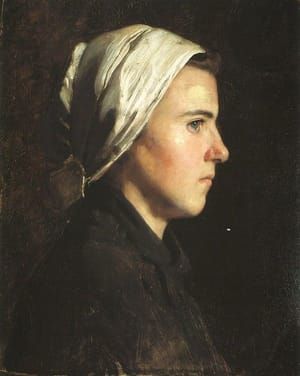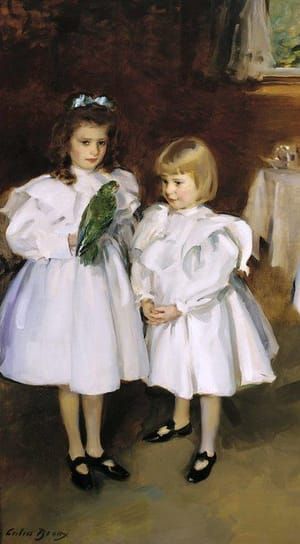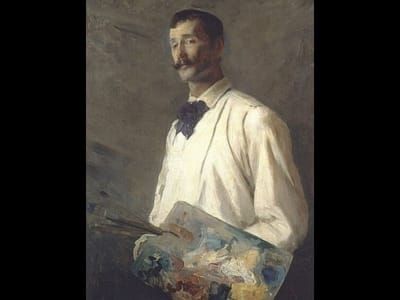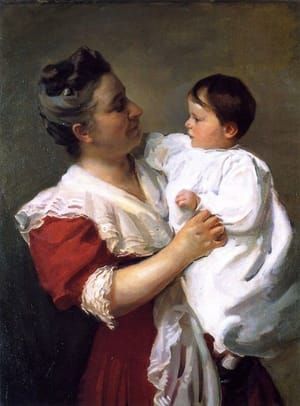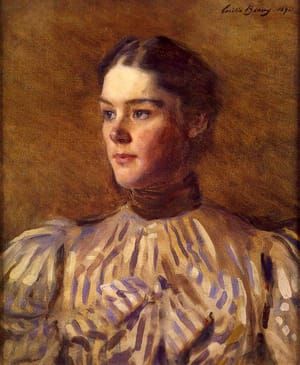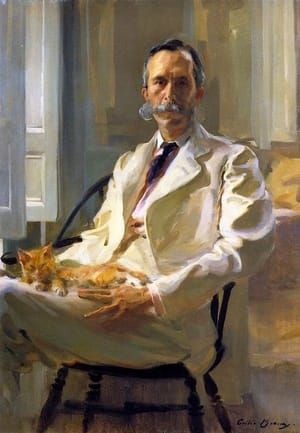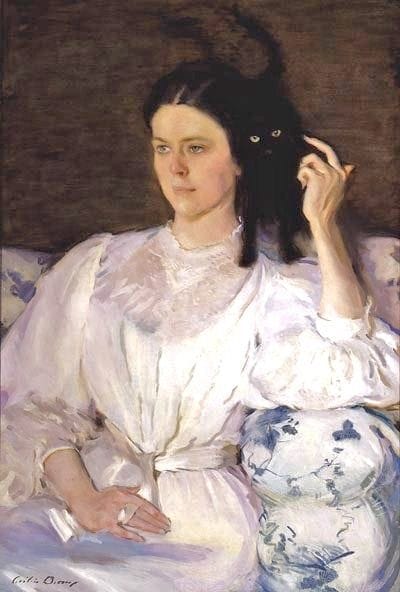

Sita and Sarita, 1893
Cecilia Beaux
Cecilia Beaux was anxious about a portrait of her cousin and her black cat, Sita and Sarita (1893), in which the placement of the woman’s hand has recently been likened to that of the courtesan in Manet’s Olympia. Whether one buys that analysis or not, the sexy undercurrent of the picture is certainly there. Beaux needn’t have worried, because in her day the suggestion of sensuality (in the portrayal of a woman caressing a cat) was overlooked by commentators or, at least, it wasn’t mentioned. The portrait was rightly admired for its stylish verve.
(http://www.artnet.com/magazineus/features/karlins/karlins4-10-08.asp)
Cecilia Beaux (1855-1942) was one of the finest American portrait painters of the late 19th Century. Like John Singer Sargent she was both a technical master and a sensitive human observer. By 1902 Beaux was recognized as one of the top portrait painters in America. She was awarded full membership in the male-dominated National Academy.
(https://artoutthewazoo.com/2012/07/13/cecilia-beaux/)
This portrait by Cecilia Beaux portrays the artist's cousin, Sarah Allibone Leavitt, dressed in white with her black cat on her shoulder. Beaux was recognized not only for her bold painting technique, but also for her ability to imbue her female subjects with wit and intelligence, rendering them more than just mere objects of beauty. A student in Paris in the late 1880s, the artist was influenced by her firsthand exposure to French impressionism. Her light-filled palette and gestural style invite comparisons with many of her contemporaries, including William Merritt Chase, James McNeill Whistler, John Singer Sargent, and Mary Cassatt.
The sitter's white dress, for instance, evokes Whistler's infamous 1862 painting of Joanna Hiffernan, Symphony in White, No. 1: The White Girl (National Gallery of Art, Washington). The formal connection between the two paintings demonstrates Beaux's knowledge of Whistler's painting. Additionally, the direct gaze of the black cat perched on Sarah's shoulder references Edouard Manet's painting Olympia (1865, Musée d'Orsay, Paris), in which a similarly posed black cat sits at the foot of Olympia's bed. These connections suggest that Beaux intended to reveal more with this portrait than simply her mastery of painting technique. The enigmatic title of the painting may represent Manet's influence—Beaux's use of Spanish diminutives, Sarita for Sarah and Sita, meaning "little one," for the cat, acknowledges the late 19th-century popularity of Spanish painting, championed by Manet.
The painting in the National Gallery of Art in Washington, DC is a replica (painted in 1921) of the original painted in 1893 and displayed in the 1895 Society of American Artists exhibition in New York. Before donating the original to the Musée de Luxembourg in Paris (now in the collection of the Musée d'Orsay, Paris), Beaux recorded that she made a second painting for her "own satisfaction when the original went to France for good."
(https://www.nga.gov/content/ngaweb/Collection/art-object-page.166425.html)
Uploaded on Jun 10, 2017 by Suzan Hamer
Cecilia Beaux
artistArthur
Wait what?


